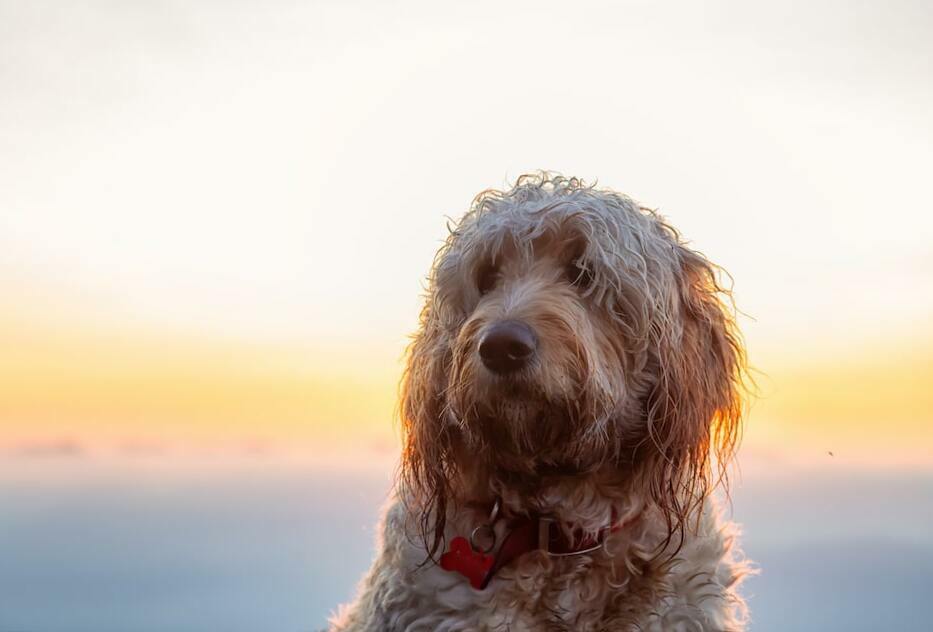In the world of designer doggies, few mixes have enjoyed the same hype and popularity as the Goldendoodle. I mean what’s not to love about a mixed doggy bred from one of the intelligent Poodles and the infinitely loyal and loving Golden Retriever?
Goldendoodles are loved for their aesthetics just as much as they are loved for their awesome personalities. There are 24 varieties in particular when it comes to physical appearance. These include varieties like the straight coat Goldendoodle, as well as colors and patterns like white and phantom.
Here is all you need to know about the different colors, patterns, and coat types that the Goldendoodle comes in.
24. Straight Or Flat
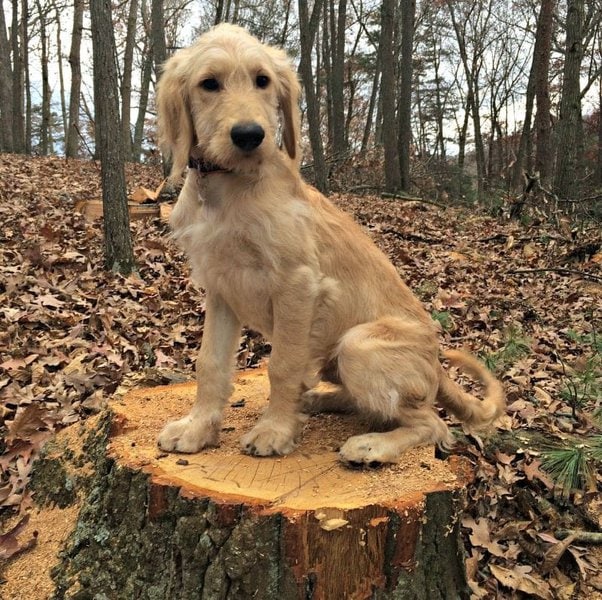
Straight fur on Goldendoodles is not very common. When this trait does occur, the mixed doggy ends up looking way more like their Golden Retriever parent. The straight or flat fur type occurs as a result of expression of the same genes that give the Goldie parent its long, straight coat.
The straight look is one that Goldendoodles pull off very well. The only disadvantage is that they are not hypoallergenic and in fact, shed minimally to moderately.
23. Curly
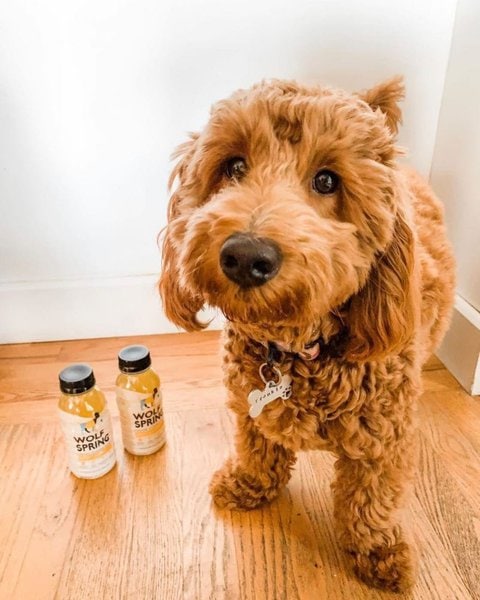
The curly coat trait is more reminiscent of what you would get on a purebred Poodle. The coat is dense with tightly curled fur that creates a compact aesthetic.
The curly-haired Goldendoodle is arguably the most popular of the 3 possible coat varieties that this mixed doggy comes in. In addition to the aesthetics, the curly coat is preferred by many for its hypoallergenic nature. It is also easier to maintain than long, straight fur.
22. Wavy
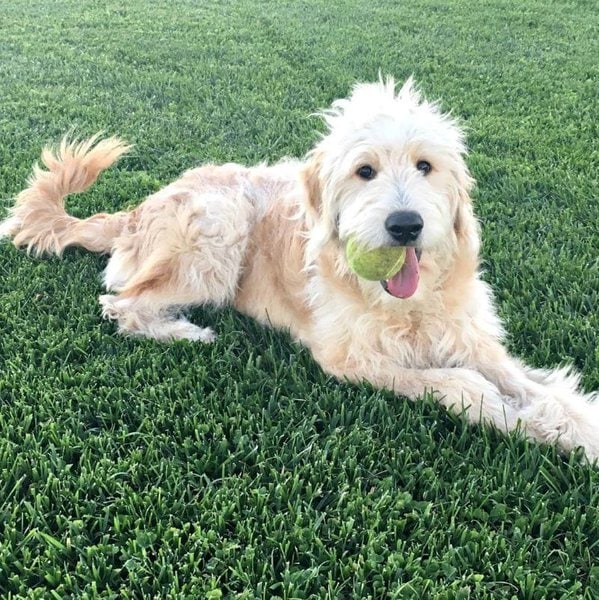
The wavy coat variety is another that is very rare and also not as popular as the curly type. The coats on these Goldendoodles are just as long as what you would find on a straight-haired variation.
The only difference is that the long fur in these Goldendoodles is wavy. Considering the fact that both the Golden Retriever and Poodle have wavy-haired varieties, this trait could be as a result of genetic contributions from either of the two parents.
21. Apricot
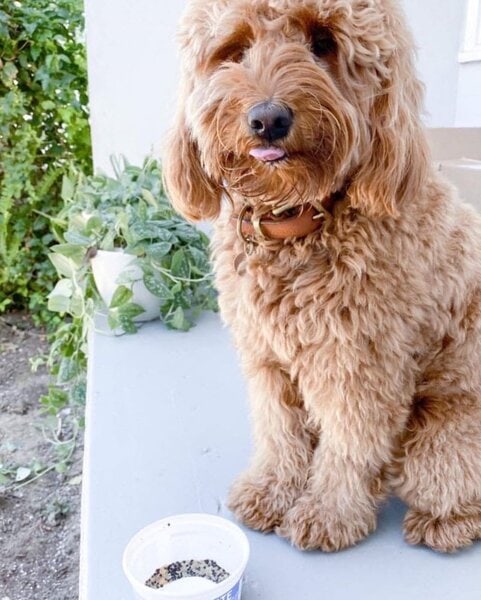
The Apricot Goldendoodle is the most popular variation when it comes to colors. However, the color is very controversial as it is often mistaken for other similar shades like red and brown.
The best way to think of apricot coats is as a shade somewhere between red and brown.
Something interesting about Apricot Goldendoodles is the fact that they get lighter with age. At birth, the coat may be a brilliant reddish-brown but this fades as they age to the pale and more muted apricot shade.
20. Black
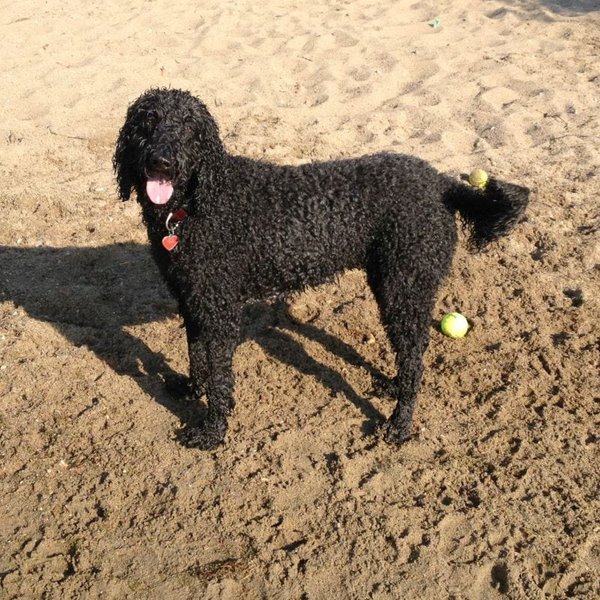
Black Goldendoodles are another popular variation of the designer doggy. Their coats are entirely black. The shade is undiluted and uniform throughout the dog’s coat. It is also important that there shouldn’t be any markings in any other color on the coat.
Unlike lighter coats like apricot, black on Goldendoodles does not fade or get lighter. What you get when the pooch is a puppy is what you will see throughout their lives.
19. Black And White
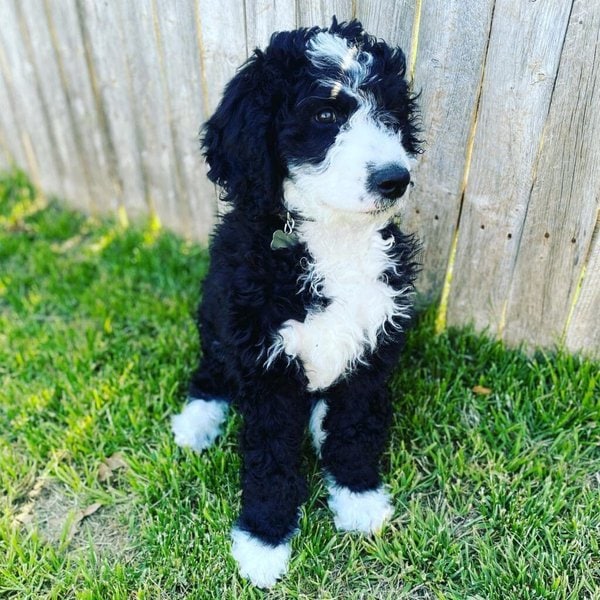
Black And White Goldendoodles have a predominantly black coat with white markings covering a minority portion of the coat.
The distribution of the white markings varies based on coat color pattern genetics. Some of the most common patterns of the black and white color combination include parti, merle, and tuxedo.
As with the all-black Goldendoodle, this incredibly rare black and white variety may also not display obvious lightening of the coat shade.
18. Blue
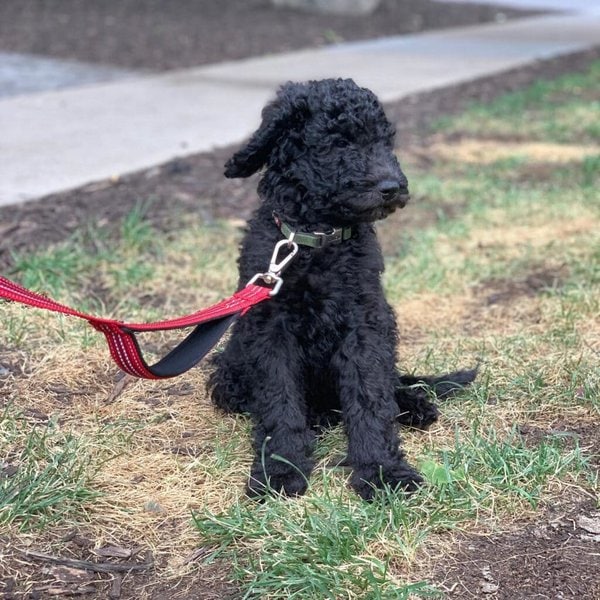
No, Blue Goldendoodles are not actually blue in the traditional sense. The term “blue” in this case is used to describe the watered-down quality of the all-black coat on these popular designer doggies.
The dilution results in a coat that is best described as a pale, dark grey that may have bluish undertones in the right lighting.
You may also notice that the nose on Blue Goldendoodles is also the same watered-down shade of black.
17. Champagne
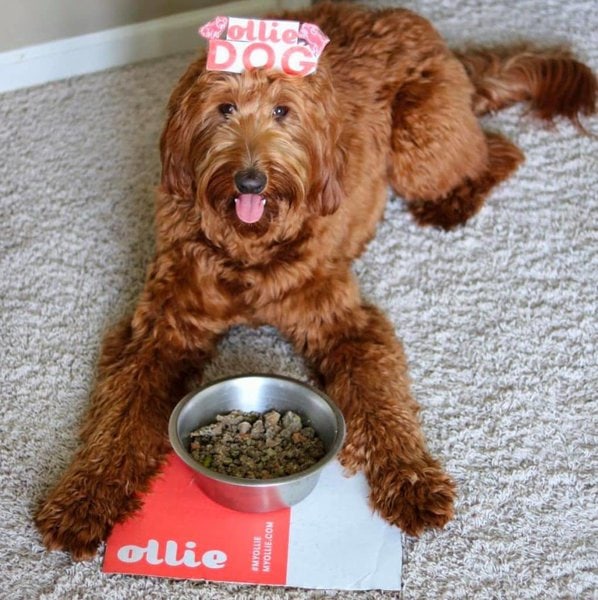
Whether or not you are a fan of champagne, this Goldendoodle color variation is one that you will almost definitely fall in love with at first sight.
To be fair, the champagne shade on Goldendoodle can be hard to differentiate from similar shades of brown and red.
However, with the right lighting and close inspection, you will notice that Champagne Goldendoodles have a bit of golden-yellow undertones. These make their shade of brown lighter and closer to that of dark-golden Golden Retrievers.
16. Chocolate Or Brown
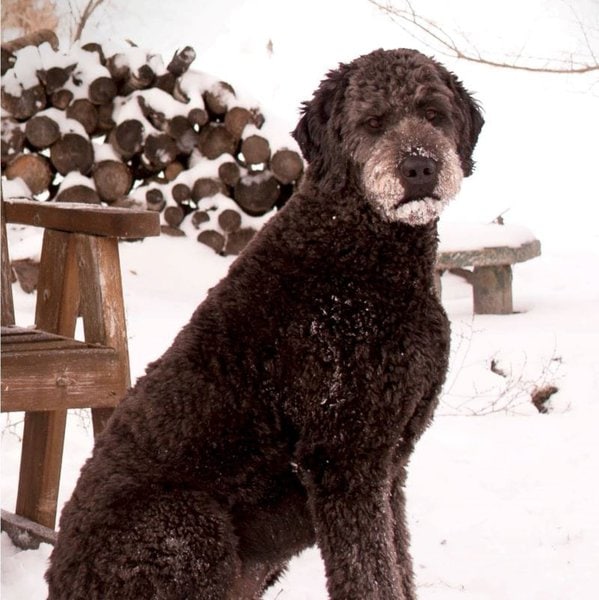
Chocolate or dark Brown Goldendoodles are another variety of the mixed breed that are incredibly popular for their color. The shade of brown, as the name suggests, is similar to that of dark chocolate.
The chocolate Brown Goldendoodle is a very rare variety as the shade is just as rare in both the Golden Retriever and Poodle parents.
As a result, the rules are a bit more lax when it comes to what qualifies as a Chocolate Goldendoodle.
Unlike other monotone varieties, a few, small white markings on the Goldendoodle do not immediately disqualify the pooch from being considered of the chocolate variety.
15. Caramel Or Golden
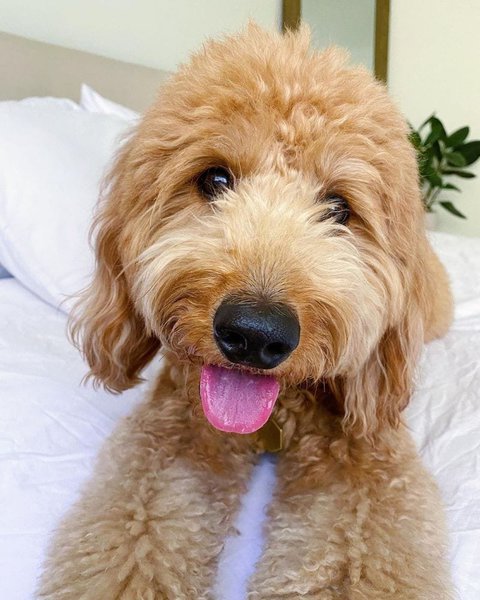
The caramel coat variety truly puts the “gold” in the name Goldendoodle. However, the shade is not always what is typically considered golden brown on purebred Golden Retrievers.
Instead, caramel Goldendoodles may have a coat that varies in shade from pale and shiny golden hues to richer and darker caramel tones.
Wherever the caramel Goldendoodle lands on this shade spectrum, there is no denying the fact that they are beautiful.
14. Cream
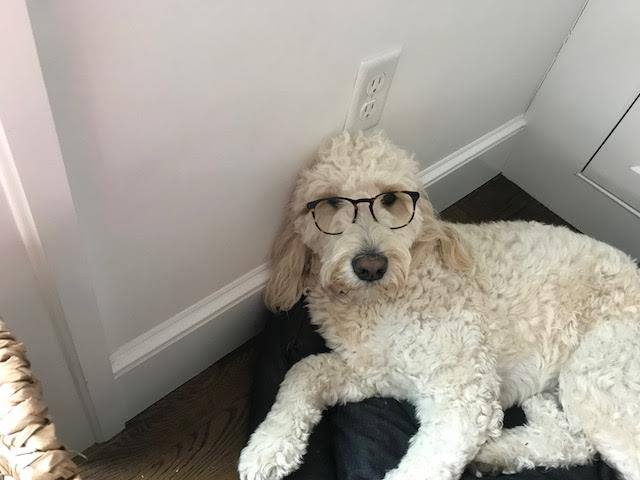
Cream Goldendoodles are often mistaken for the white variety. However, if you look closely enough you will pick up on the differences in shade pretty quickly.
The cream coat on these Goldendoodles tends to be a bit darker than your regular white coat. Some may even have a tinge of pale, yellowish-brown shades that further distinguish them from pure White Goldendoodles.
However, as the Goldendoodle gets older and the shade of cream gets lighter, it may get a bit harder to tell them apart from the white.
13. Gray
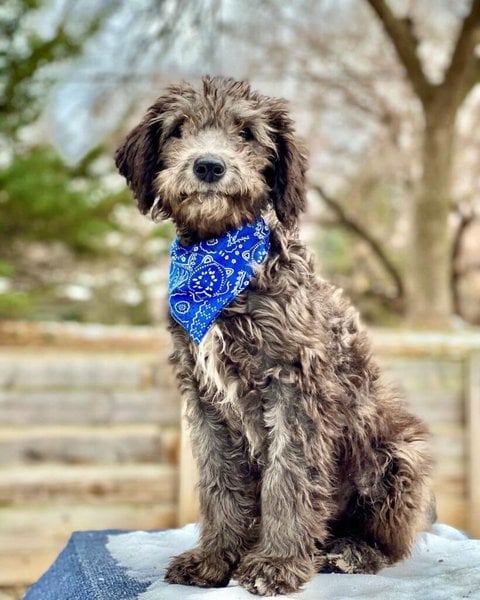
Gray Goldendoodles come in many different shades of the color. Some have darker, wild-looking shades while others may have light shades that are almost similar to the silver Goldendoodle’s coat.
Gray Goldendoodles get their beautiful coats from the Poodle side of the family. The Poodle must be carrying a specific gene which is the G allele. This gene is dominant which means it will be expressed even if it is only present in one parent.
12. Red
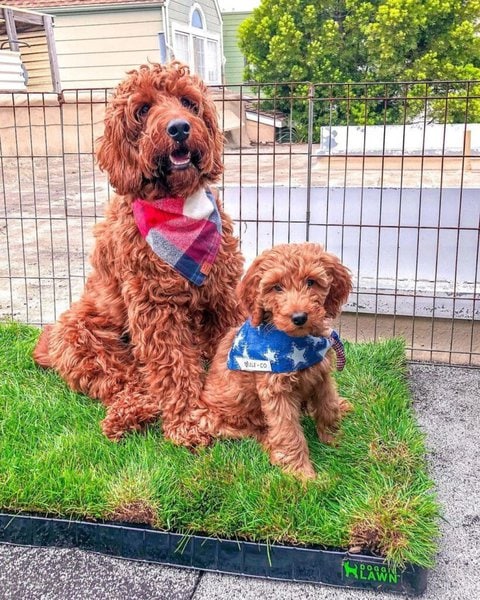
Red Goldendoodles may look a bit similar to varieties like chocolate, champagne and apricot but they are at least a bit easier to distinguish from the rest. The coat on a red Goldendoodle is a shade of brown that has red undertones.
The red can be dark and rich like the shade of liver or it may have more of a rusty quality.
Unlike most of the other shades of brown that Red Goldendoodles are mistaken for, these doggies will typically have a solid-black nose.
11. Silver
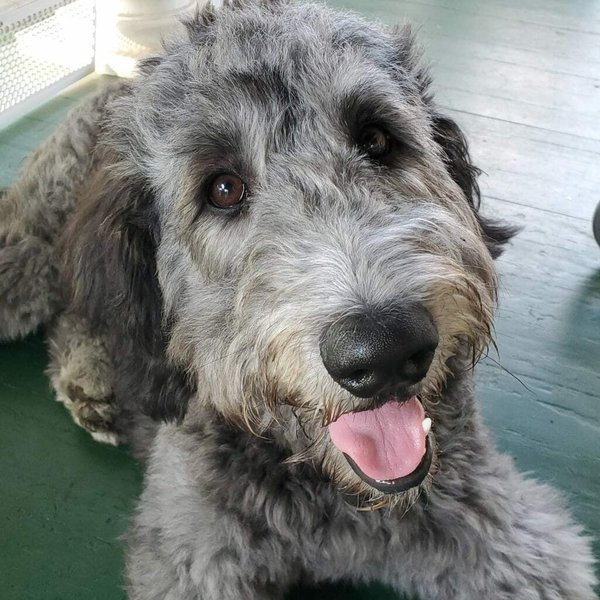
Silver Goldendoodles are yet another color variety that we have the Poodle’s genes to thank for. It is essentially a brighter and seemingly diluted shade of gray.
The coat on a Silver Goldendoodle may also have a bit more of a shiny look to it than plain gray which is something that is best appreciated on straight or wavy coat types.
Something important to appreciate about Silver Goldendoodles is that the coat may not be uniformly shaded. There may be patches where the coat is a darker shade of silver and may even appear like a dark grey.
10. Silver Beige
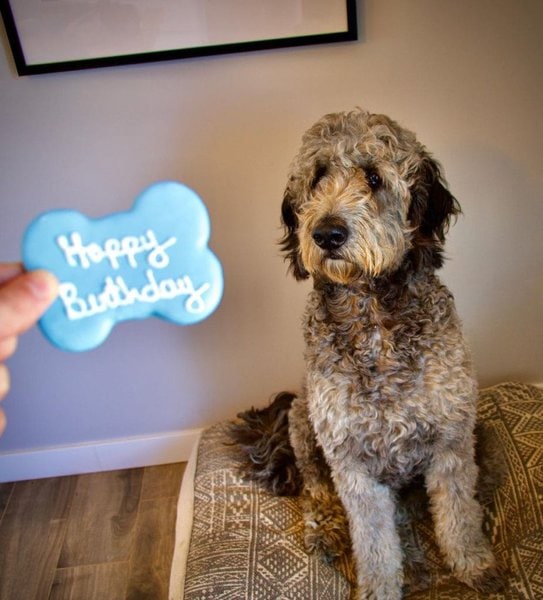
The silver beige coat color on Goldendoodle combines the watered down shade of silver with a light brown color. The two coexist almost equally and simultaneously throughout the Goldendoodle’s coat.
However, there are some Silver Beige Goldendoodles where the entire face is covered by silver fur.
Of note with the Silver Beige Goldendoodles is that most of them are born entirely beige-brown and only develop the silver shade as they grow older.
9. Tan
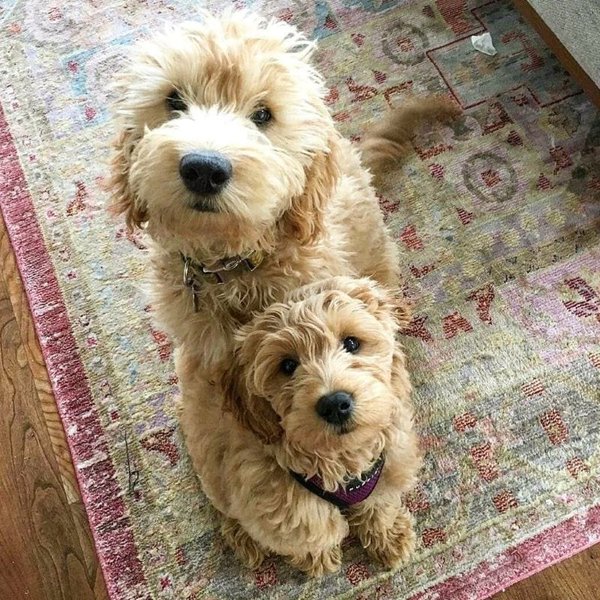
The Tan Goldendoodle is probably the easiest to identify among the many shades of brown that this mixed doggy comes in. The brown is a light, solid shade with earthy tones.
Tan Goldendoodles are not as bright and shiny as the champagne and caramel varieties or as dark and rich as the chocolate and apricot types.
Generally, Tan Goldendoodles are very rare as the gene combination required to create that specific shade is not very common.
8. White
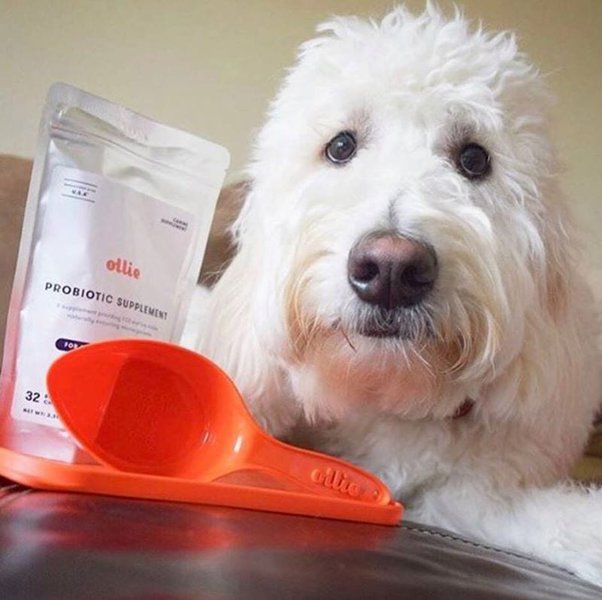
White Goldendoodles give varieties like tan and the black-white combo a run for their money when it comes to being rare. And given how trendy white doggies have become, these white pooches may also give apricot variety competition for the top spot in terms of popularity.
White Goldendoodles have rare genes that give the coat the uniform, brilliant white appearance. Unlike albino dogs, the White Goldendoodles will have pigment in other areas, such as the nose and irises.
7. Abstract
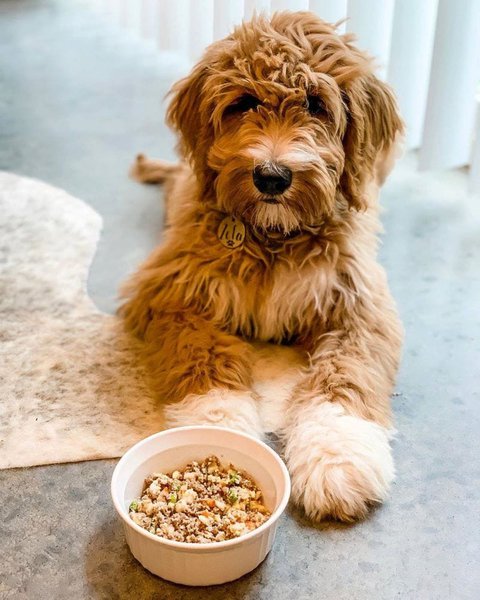
Abstract Goldendoodles are also known as mismarked Goldendoodles and are known for having white markings that cover less than 50% of the coat. The rest of the coat could be any dark color that the Goldendoodle comes in from apricot to tan.
The abstract pattern is described as abstract as there is no specific order in which the white markings appear. The size and extent of the markings is also unpredictable.
For some Goldendoodles, the white markings may be small and limited to patches on the paw. For other Abstract Goldendoodles. The white marking may be so extensive that they almost reach that 50% cutoff.
6. Brindle
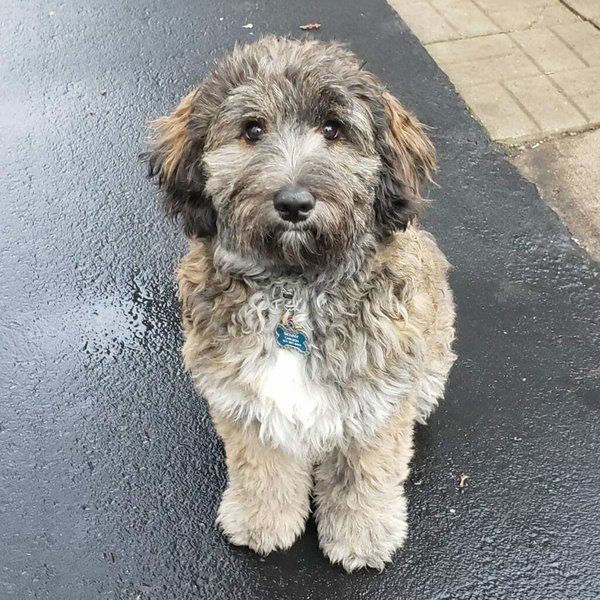
Brindle markings on Goldendoodles are incredibly rare. While they can occur with Goldendoodles from purebred Poodles and Golden Retrievers, it is more likely to happen if one of the parents has genetic contributions from another dog breed somewhere in the lineage.
The Brindle Goldendoodle will have black, striped markings on a coat that is typically brown but may also be grey or silver. The stripes are best appreciated over large areas like the back and flanks.
5. Merle
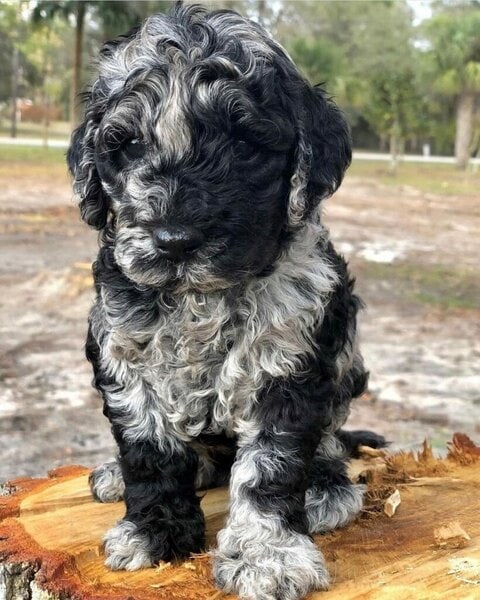
Merle markings on Goldendoodles appear as mottled patches of a diluted, dark color on an otherwise solid-colored coat. More often than not, the irregular patches will be silver or blue on a black, brown, or even white coat.
Merle Goldendoodles may also have unusual pigmentation of the iris with many having blue or gray eyes.
While Merle Goldendoodles do have the benefit of having a unique aesthetic, the genes responsible for the markings are often associated with eye and ear diseases.
4. Parti
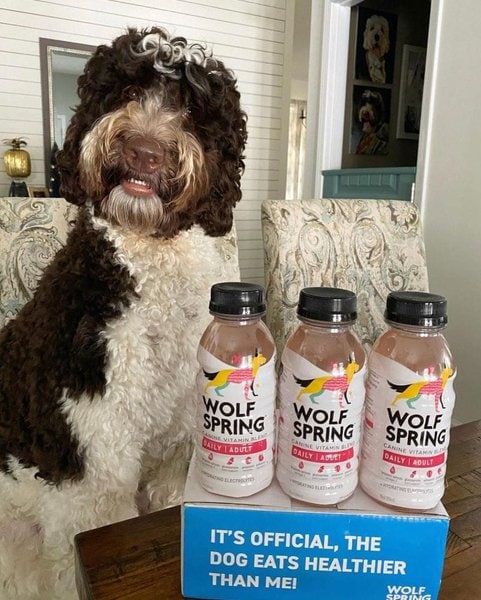
The Parti Goldendoodle is a pattern-based variation of the mixed breed where the coat is predominantly white with dark-colored markings covering less than 50% of the coat. This is the exact opposite of Abstract Goldendoodle where white serves as the markings and not the base.
The markings can come in any of the possible Goldendoodle dark colors including black, blue, and the many shades of brown. Their size and distribution varies from one parti Goldendoodle to the next. However, most have large patches on their backs, foreheads, and ears.
3. Sable
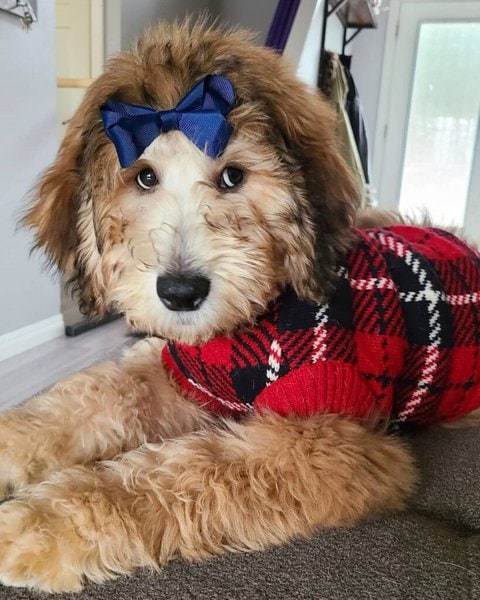
The Sable Goldendoodle is another very rare pattern variety. They have dark-tipped fur which is best appreciated on straight or wavy coat types. Regular trimming may also make it difficult to identify sable markings on a Goldendoodle.
The sable markings on Goldendoodles can occur simultaneously with other markings. Abstract and tuxedo patterns are the most common in this case. Interestingly, the black tips may not be present on the white patches on the Goldendoodle’s coat.
2. Tuxedo
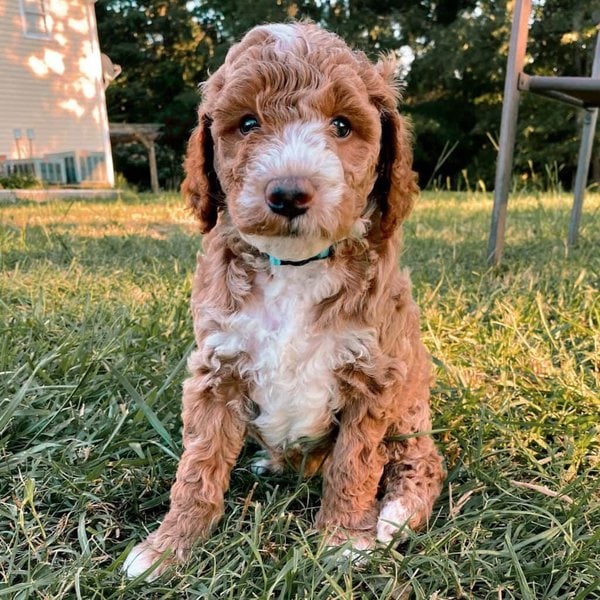
Technically speaking, the Tuxedo Goldendoodle is a subtype of the abstract or mismark variety. This is because the tuxedo pattern includes white markings that cover less than 50% of the Goldendoodle’s coat.
What makes the tuxedo pattern special is the fact that the distribution of the white markings on the Goldendoodle is more predictable.
As the name suggests, the white markings will appear in the same way a classic tuxedo suit displays the white shirt underneath. The Goldendoodle will therefore have a coat that is either black or a shade of brown with white paws and white patches on the neck, chest and the lower half of the face.
1. Phantom
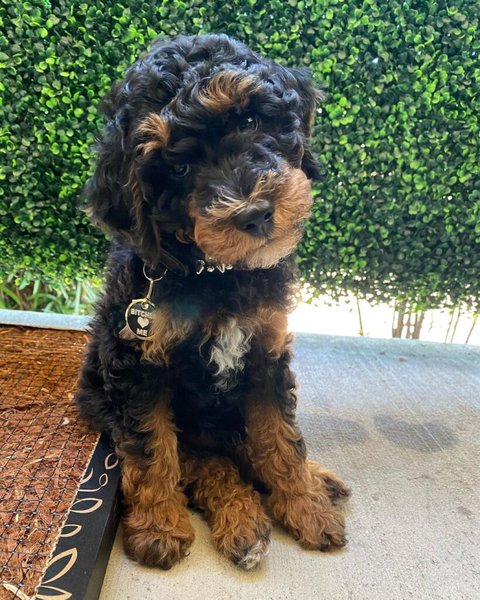
The Phantom Goldendoodle is the rarest variation in terms of coat characteristics for this mixed breed. The term refers to white, silver, or tan markings on a solid black or dark brown main coat.
The Phantom Goldendoodle is also a bit more predictable in terms of the pattern of distribution of the markings. The white, silver, or tan patches may appear on the eyebrow region, lower surface of the snout, chest, shoulders, and paws.
Related Questions
Will My Goldendoodle Puppy Change Color? Goldendoodle puppies often change color as they grow older. The coats typically get lighter with time from deep tones in the puppy’s newborn days to lighter and paler tones as they reach adulthood. The color change is most noticeable in Goldendoodles that have light coat tones, such as tan, cream, or golden-colored Goldendoodles.
How Do You Tell If A Goldendoodle Puppy Will Have Furnishings? The best way to tell whether or not your Goldendoodle will have coat furnishings is through genetic testing. Those Goldendoodles that are likely to have the trait will have the IC locus gene. The furnishings appear as longer fur in the specific areas on the Goldendoodle. These include around the snout and eyebrows.
What Is The Most Popular Goldendoodle Color? Apricot is widely considered the most popular Goldendoodle color on the market. This is followed closely by Cream Goldendoodles and Red Goldendoodles. For people who want a rare colored-Goldendoodle, the ones with parti and phantom markings are easily the most popular. Pure White Goldendoodles are also another popular niche variety of this designer dog breed.

